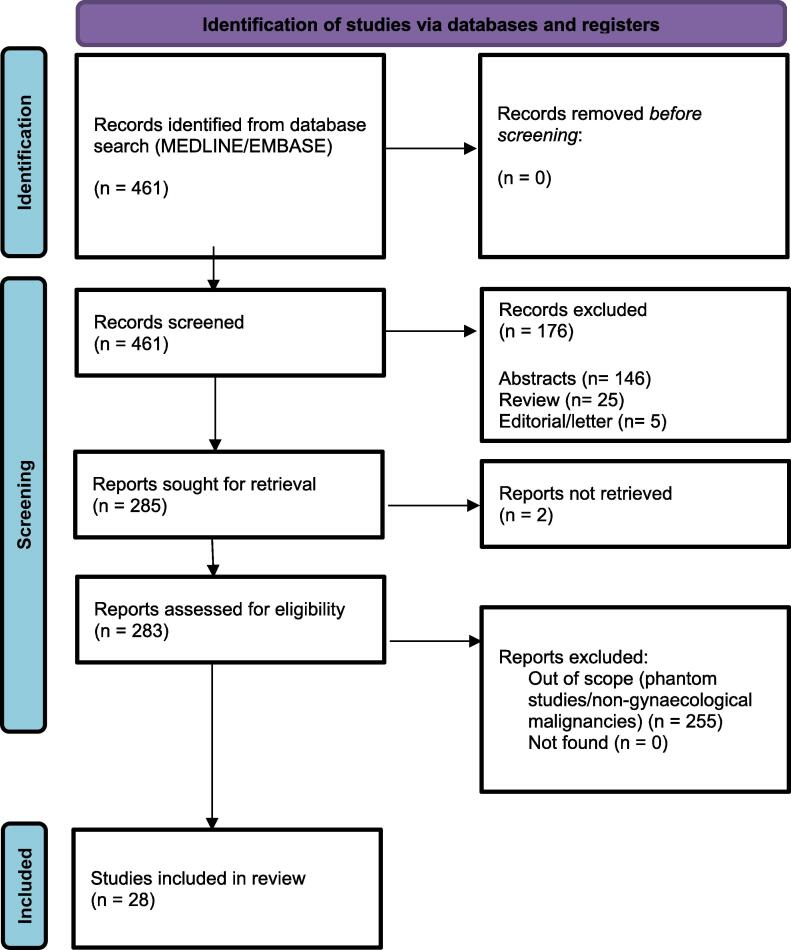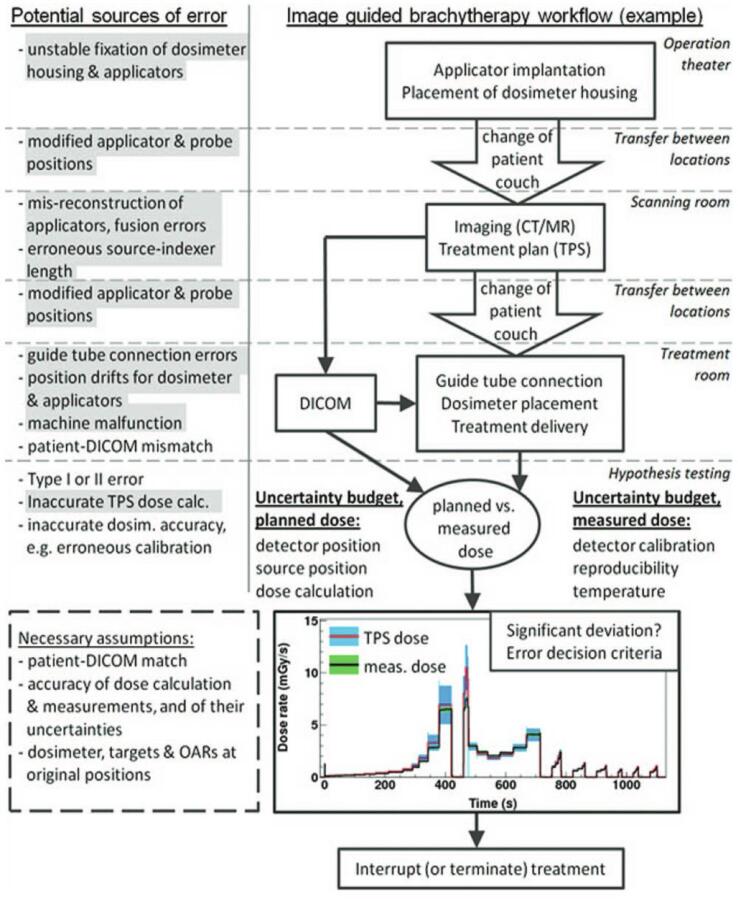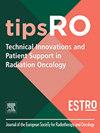体内剂量法在妇科近距离放射治疗中的临床应用综述。
IF 2.8
Q1 Nursing
Technical Innovations and Patient Support in Radiation Oncology
Pub Date : 2024-11-16
DOI:10.1016/j.tipsro.2024.100290
引用次数: 0
摘要
近距离放射治疗是妇科恶性肿瘤的关键治疗方法,由于其陡峭的剂量梯度,它向肿瘤体积提供高剂量,同时保留附近的正常组织。准确性是至关重要的,因为微小的变化分别会导致靶体积或危险器官(OARs)的临床显著剂量不足或过量。对近距离治疗期间剂量的独立验证通常不进行,但重要的是确定严重误差和确定行动阈值,以指导分段间治疗决策。体内剂量法(IVD)是提高准确性和识别潜在错误的一种策略。尽管有前景的幻影工作,临床应用IVD缺乏。使用Medline和EMBASE进行文献检索,无日期限制,基于PICO框架评估IVD在妇科近距离放疗中的临床应用。在对题目和摘要进行筛选后,对全文论文进行了审查,并确定了28项研究。使用了几种剂量计,通常从直肠、膀胱、阴道和间质导管内进行测量。计算剂量和测量剂量之间的显著差异归因于几何位移。所回顾的研究表明,IVD在近距离放射治疗中用于剂量验证的可行性,但在IVD用于优化治疗之前,还需要进一步的工作。本综述的目的是调查IVD在妇科近距离放射治疗中的临床应用,了解其面临的挑战,并确定将其融入日常临床实践所需的步骤。本文章由计算机程序翻译,如有差异,请以英文原文为准。


The clinical application of in vivo dosimetry for gynaecological brachytherapy: A scoping review
Brachytherapy is a key treatment for gynaecological malignancies, delivering high doses to the tumour volume whilst sparing nearby normal tissues due to its steep dose gradient. Accuracy is imperative as small shifts can lead to clinically significant under- or over-dosing of the target volume or organs at risk (OARs), respectively. Independent verification of dose delivered during brachytherapy is not routinely performed but it is important to identify gross errors and define action thresholds to guide inter-fraction treatment decisions. In vivo dosimetry (IVD) is one strategy for improving accuracy and identifying potential errors. Despite promising phantom work, clinical application of IVD is lacking. A literature search was performed using Medline and EMBASE without date limits and based on the PICO framework to evaluate the clinical application of IVD in gynaecological brachytherapy. After screening of titles and abstracts, full text papers were reviewed and 28 studies were identified. Several dosimeters were utilised and measurements were typically taken from the rectum, bladder, vagina and within interstitial catheters. Significant differences between calculated and measured dose were attributed to geometric shifts. The studies reviewed demonstrated the feasibility of IVD in brachytherapy for dose verification but further work is required before IVD can be used to optimise treatment. The purpose of this scoping review is to investigate the clinical application of IVD in gynaecological brachytherapy, understand its challenges and identify the steps required to facilitate integration into everyday clinical practice.
求助全文
通过发布文献求助,成功后即可免费获取论文全文。
去求助
来源期刊

Technical Innovations and Patient Support in Radiation Oncology
Nursing-Oncology (nursing)
CiteScore
4.10
自引率
0.00%
发文量
48
审稿时长
67 days
 求助内容:
求助内容: 应助结果提醒方式:
应助结果提醒方式:


